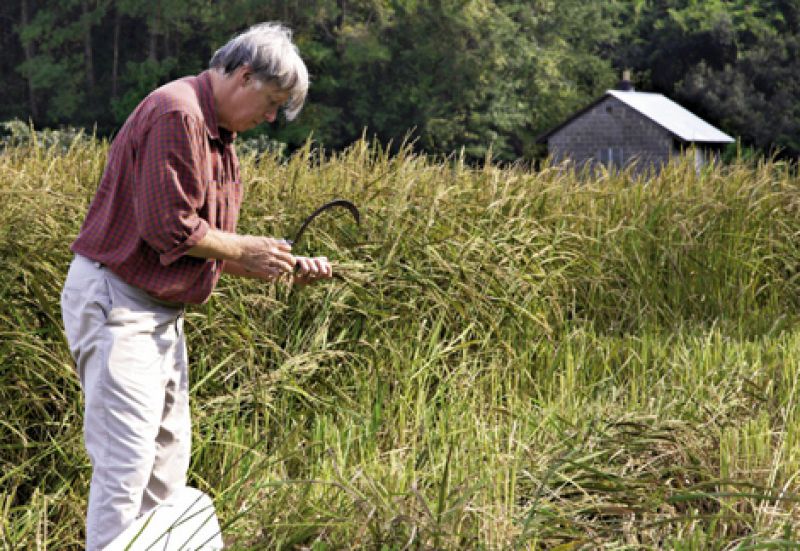
In culinary circles from coast to coast, South Carolina’s Glenn Roberts is considered a Renaissance foodie farmer. From Thomas Keller’s New York and Napa establishments to the elaborate bill of fare at San Francisco’s Boulevard, it’s impossible to miss the imprint of his Anson Mills artisan grains.
Roberts’ is a five-star, and finicky, clientele, including chefs Charlie Trotter, Tom Colicchio, Bobby Flay, Mario Batali, and Wolfgang Puck. The James Beard newsletter even dubbed him “Corn King,” predicting he will join those celebrity farmers planting seeds to propel their missions—in Roberts’ case, to get authentic flavor to chefs and diners.
For this 61-year-old president and founder of the Carolina Gold Rice Foundation, member of Slow Food USA’s biodiversity committee, and founding member of Farmers, Artisans, and Chefs, that means organically growing, harvesting, and milling near-extinct heirloom varieties of corn, rice, and wheat, resurrecting the 20 or more ingredients integral to the antebellum Carolina Rice Kitchen—“the Southern larder before the Civil War.” Reaching into the past, he pulls ancient foods—cereals, peas, wheat, corn, rice, barley, and more—to be grown at their finest. He even makes “rice grits” from leftover bits of the grain.
Roberts can’t talk about his products without speaking of their place in culinary history. “He understands the story as much as the food, yet he’s not disconnected from reality,” says Michigan restaurateur Ari Weissman, owner of Zingerman’s food retailers. “It’s hard to imagine people in Ann Arbor lining up for grits, but they do for Glenn’s.” The Zingerman’s catalogue sells Anson Mills goods, such as farro, as limited specials. (Famed chef Lidia Bastianich actually bought Roberts’ entire crop of buckwheat groats to serve in her restaurants.) “Glenn’s products are dramatically better than others,” explains Weissman. “People get a handle on good food, and they want it.”
The same could be said of Roberts’ childhood. “I longed for fresh corn season,” he says, recalling the grits his mother ordered and had flown to San Diego after they moved there. She told him of milling fresh corn each week during the long growing seasons in Aiken and Edisto, South Carolina. Only when the season was over did she she lye treat and store them for the winter. And thus began his penchant for grinding and eating fresh corn. In 1998, he sold all he owned in order to purchase four native granite mills and 40 chest freezers, then pay the rent on a small metal warehouse in Columbia.
Roberts planned to start with a single cornfield and later expand production to include rice and other crops important to the Carolina Rice Kitchen cuisine. But after watching a storm blow down a big field of nearly mature heirloom corn, he swiftly learned that one field in one place wouldn’t work. And so, thanks to Roberts’ focus on sustainability and his never-ending quest for knowledge of our heritage crops, Anson Mills production has spread over small fields throughout the South, and now the Northeast, much to the delight of those eaters everywhere who love hand-harvested artisan crops. For Anson Mills products and recipes, visit www.ansonmills.com.